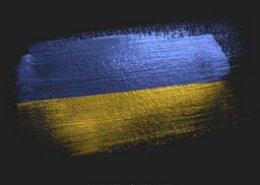 https://www.chosenpeople.org.uk/wp-content/uploads/2022/10/international-newsletter-winter-22-web.png
430
1500
N Cooke
https://www.chosenpeople.org.uk/wp-content/uploads/2017/12/CPM-UK-Logo-300x50.png
N Cooke2022-10-21 16:42:532023-07-02 16:32:05CPM International News
https://www.chosenpeople.org.uk/wp-content/uploads/2022/10/international-newsletter-winter-22-web.png
430
1500
N Cooke
https://www.chosenpeople.org.uk/wp-content/uploads/2017/12/CPM-UK-Logo-300x50.png
N Cooke2022-10-21 16:42:532023-07-02 16:32:05CPM International NewsThe Tabernacle
The Tabernacle
The Tabernacle; A Portrait of Redemption
Dear Friend in the Messiah,
Shalom in His grace.
Let me tell you how excited I am about a new Bible teaching project we have been working on these past several months! We are partnering with a wonderful Christian production company to create a virtual three-dimensional model and tour of the Tabernacle, which was the “portable Temple” where God dwelt during the Israelites’ journeys on the way to the promised land. The Hebrew for “tabernacle” is mishkan, which means dwelling place.
In Exodus 25:1–27:19, Moses outlined the plan for the Tabernacle, which God revealed to him on Mount Sinai. In many ways, the Tabernacle is a biblical type that points to the person and work of Messiah Jesus. That is one reason why I believe it is crucial that we understand the Tabernacle!
Within this incredible structure, we find the “spiritual essentials” we need to worship the God of Abraham, Isaac, and Jacob. Once done, we hope our 3D model will help you experience the Tabernacle in a fresh and deeper way.
Now, allow me to give you a brief guide to the Tabernacle’s components and show why they are important for anyone who wants to live for the Lord.
THE ALTAR —mizbeiach
One of the major roles of the priests was to offer sacrifices to God on the altar (Exodus 27:1–8) in the Tabernacle (and eventually the Temple). One cannot underestimate the importance of the required sacrifices for atonement. We read in Leviticus 17:11, “For the life of the flesh is in the blood, and I have given it to you on the altar to make atonement for your souls; for it is the blood by reason of the life that makes atonement.”
THE TABERNACLE: A PORTRAIT OF REDEMPTION
Yeshua was the lamb of God who offered Himself as a sacrifice, and His death atoned for the sins of Israel and the entire world (John 1:29). We are grateful for God’s sacrifice of His Son for our salvation. As followers of the Messiah, we also offer ourselves in sacrificial service, which is our spiritual duty (Romans 12:1–2). kiyorּ)—כִּיֹור)
THE LAVER
The priests were commanded to cleanse themselves in the laver, or basin, before offering sacrifices (Exodus 30:17–20). This law teaches us a key lesson, as there must be purity before we are able to worship. The laver teaches us the importance of purity and cleansing in our spiritual lives. In fact, the cleansing that Israel and the world needs is not produced by bathing in water, but rather we are washed and purified through the blood of Jesus.
The laver points to the perfect cleansing we experience by faith through His sacrifice for our sins. I believe the Lord had the death of the Messiah Jesus in mind when the prophet wrote, “In that day a fountain will be opened for the house of David and for the inhabitants of Jerusalem, for sin and for impurity” (Zechariah 13:1).
This end-time cleansing will take place when the Jewish people turn to Him
who was pierced (Zechariah 12:10). For those of us who already know the
Lord, we understand God forgives and cleanses us each day as we confess our sins and re-experience the full power of His atoning blood (1 John 1:9).
THE LAMPSTAND —menorah
God instructed Israel to make a lampstand with six branches (Exodus 25:31–40). Light is an integral theme in the Bible and a key element of our walk with God. His light guides us. His word is a lamp to our feet and a light that keeps us from stumbling (Psalm 119:105). The Lord chose Israel to be a light to the nations, yet His Son Yeshua, Himself an Israelite, shines this light more brightly than any individual or nation.
He is the light of the world, as John wrote, “I am the Light of the world; he who follows Me will not walk in the darkness, but will have the Light of life”
(John 8:12).
THE ETERNAL LIGHT —ner tamid
God told Israel to burn a lamp continually in the Tabernacle (Exodus 27:20–21). This eternal light points to God’s eternal, glorious, and holy character. God is unchanging in His attributes and nature. The ever-present light reminds us that the God of Abraham, Isaac, and Jacob exists from everlasting to everlasting and that His Son shares the same nature.
Therefore, Micah wrote that the Messiah’s “goings forth are from long ago, from the days of eternity” (Mic 5:2).
THE BREAD OF THE PRESENCE —panim lechem
In the ancient Middle East and even today, a meal is the ultimate expression of intimacy and friendship between individuals. The bread of the Presence refers to a meal we can share with God that speaks of this potential depth of intimacy and friendship with the King of kings. Israel was to always have bread on a table in the Tabernacle (Exodus 25:23–30; Leviticus 24:5–6).
Yeshua has made a way for us to enter into and enjoy this relationship with the Lord. We are forgiven friends of the almighty and holy God of the universe through the sacrifice of Yeshua (John 15:15). In Him, we are free to fellowship with God like friends sharing a meal. We also joyfully await the marriage supper of the Lamb when the Messiah will dine with His bride (Revelation 19:9).
The laver and the altar prepare our hearts for the beauty of this
eternal fellowship with the Lord and Creator of all things.
THE ALTAR OF INCENSE —ketoret-ha mizbach
Prayers of intercession were another special responsibility of the priests. God instructed them to continually burn incense in the Tabernacle (Exodus 30:1–10) to symbolize their prayers wafting between earth and heaven.
Prayer is, of course, critical to our spiritual life. It is the line of communication between us and the Lord.
We may pray liturgically or spontaneously—with or without a formula. Just as the priests were to burn incense constantly, we are to pray without ceasing (1 Thessalonians 5:17).
THE DIVIDING VEIL — parochetּ
This veil was a curtain that divided the holy place and the Holy of Holies (Exodus 26:31–33). Once a year, the high priest entered the Holy of Holies to offer the Yom Kippur (Day of Atonement) sacrifice (Leviticus 16).
The moment Yeshua died on Golgotha, the veil in the Temple was torn in two (Matthew 27:51) as a sign that all who believe now have access to the Holy of Holies through faith in the justifying work of Yeshua on the cross (Romans 5:1–2; Hebrews 10:19–20). One of the critical components of a healthy spiritual life is recognizing the access we have to God through the Messiah.
Nothing can stand between us and God. We simply need to take advantage of this marvellous and privileged access to the presence of God, nurtured through prayer, reading Scripture, fellowship, meditation, and obedience for those cleansed by His atoning blood.
THE ARK —aron
In Exodus 25:10–22, God told the Israelites how to build the ark. He commanded them to place several important items in the ark, including the two stone tablets on which God wrote the Ten Commandments (Deuteronomy 10:1–5), Aaron’s blooming rod (Numbers 17:1–11), and a pot of manna (Exodus 16:33–34).
All these items testified to God’s faithfulness to the Jewish people. These reminders of God’s word, the miracle of His transforming power, and His provision were important, and they reminded the high priest of why his obligations to the rest of the nation were so critical.
Yeshua is represented by each of the three items within the ark. As to the manna, He said, “I am the living bread that came down out of heaven”
(John 6:51). Aaron’s rod was a definitive symbol of God’s power, representing how Jesus was God on earth; “I and the Father are one” (John 10:30).
Finally, the word of God, represented by the stone tablets, finds its greatest fulfilment in the Messiah, “And the Word became flesh, and dwelt among us, and we saw His glory, glory as of the only begotten from the Father, full of grace and truth” (John 1:14)
THE MERCY SEAT —kaporet
The mercy seat is the piece of Tabernacle furniture that was most significant for the ancient Israelites. The mercy seat covered the ark in the Holy of Holies (Exodus 25:17–22). One might think of the mercy seat as atonement central. It was where the high priest sprinkled blood when he entered the Holy of Holies once a year to seek atonement for the whole nation of Israel (Leviticus 16:14–15).
Yeshua died once for all, for all humanity, and His one sacrifice suffices for all time (Hebrews 9:11–14). His blood fully cleanses all who believe. Yet, that is not the end of His work as our perfect High Priest, as Jesus continually intercedes for us in heaven.
As the author of Hebrews wrote, “Therefore He is able also to save forever those who draw near to God through Him, since He always lives to make intercession for them” (Heb 7:25).
IN CONCLUSION
As you can see, the Tabernacle gives us much to consider as this mobile Temple reveals so many of the essential building blocks that shape our spiritual lives. The Tabernacle pointed to Jesus our Messiah who fulfils every intricate feature of the Tabernacle. The shadows match the substance.
I hope this brief guide to the Tabernacle encourages you to more deeply appreciate the atonement Jesus made for us. Thanks to Him and Him alone, we can draw near to the Lord each and every moment of our lives! United in His magnificent work of redemption, He is our everlasting High Priest!
INTERNATIONAL NEWS
A SHORT CONVERSATION HAS ETERNAL REWARD
Adam* is a Jewish believer who came to Messiah a few years ago while on the phone with one of our missionaries, and another of our missionaries has had a relationship with him throughout the pandemic by phone. A few weeks ago, Adam called our staff member and told him that just moments
before the phone call, he had been playing Russian roulette when the Lord led him to call our missionary, who was able to help Adam refocus his thoughts on Christ, which helped make a big difference.
The challenges Adam was facing were not going to suddenly resolve themselves, and he was holding himself to blame for every mistake he had ever made, and it was overwhelming him. Our staff reminded him that because of the finished work on the cross, Jesus made it possible to move forward from every mistake and every error.
Adam made a commitment to look ahead while learning from the mistakes he made, which is ultimately what we are all called to do. He told our missionary he would put the gun away and trust in Jesus, but Adam needs our prayers. We never know how just being a part of someone’s life may have eternal consequences.

 https://www.chosenpeople.org.uk/wp-content/uploads/2022/10/international-newsletter-winter-22-web.png
430
1500
N Cooke
https://www.chosenpeople.org.uk/wp-content/uploads/2017/12/CPM-UK-Logo-300x50.png
N Cooke2022-10-21 16:42:532023-07-02 16:32:05CPM International News
https://www.chosenpeople.org.uk/wp-content/uploads/2022/10/international-newsletter-winter-22-web.png
430
1500
N Cooke
https://www.chosenpeople.org.uk/wp-content/uploads/2017/12/CPM-UK-Logo-300x50.png
N Cooke2022-10-21 16:42:532023-07-02 16:32:05CPM International News https://www.chosenpeople.org.uk/wp-content/uploads/2022/06/internationalnewsjune22.png
430
1500
N Cooke
https://www.chosenpeople.org.uk/wp-content/uploads/2017/12/CPM-UK-Logo-300x50.png
N Cooke2022-06-23 20:28:352023-07-02 16:56:49CPM International News
https://www.chosenpeople.org.uk/wp-content/uploads/2022/06/internationalnewsjune22.png
430
1500
N Cooke
https://www.chosenpeople.org.uk/wp-content/uploads/2017/12/CPM-UK-Logo-300x50.png
N Cooke2022-06-23 20:28:352023-07-02 16:56:49CPM International News https://www.chosenpeople.org.uk/wp-content/uploads/2022/03/UKRAINE-WEBSITE.png
188
300
N Cooke
https://www.chosenpeople.org.uk/wp-content/uploads/2017/12/CPM-UK-Logo-300x50.png
N Cooke2022-04-29 21:04:092024-03-07 11:35:43Fiona on the Frontline Week 6
https://www.chosenpeople.org.uk/wp-content/uploads/2022/03/UKRAINE-WEBSITE.png
188
300
N Cooke
https://www.chosenpeople.org.uk/wp-content/uploads/2017/12/CPM-UK-Logo-300x50.png
N Cooke2022-04-29 21:04:092024-03-07 11:35:43Fiona on the Frontline Week 6 https://www.chosenpeople.org.uk/wp-content/uploads/2022/02/UK-newsltter-march-website.png
1253
2000
N Cooke
https://www.chosenpeople.org.uk/wp-content/uploads/2017/12/CPM-UK-Logo-300x50.png
N Cooke2022-04-13 21:33:102024-03-07 11:39:13UK Newsletter April 2022
https://www.chosenpeople.org.uk/wp-content/uploads/2022/02/UK-newsltter-march-website.png
1253
2000
N Cooke
https://www.chosenpeople.org.uk/wp-content/uploads/2017/12/CPM-UK-Logo-300x50.png
N Cooke2022-04-13 21:33:102024-03-07 11:39:13UK Newsletter April 2022


